Ten+ years into my teaching career and I finally feel like my classroom runs like a well-oiled machine. Through A LOT of trial and error, I have created a space that works for me AND my students. Many of the following ideas put the responsibility back on the students so they learn life skills and are self-sufficient, thus freeing me up to do the 502 other things I need to do during the class period. They also give students ownership of their learning which I think is important for them to have. Here are seven of my favorite routines and procedures for Spanish class that 1. actually work and 2. will make your life so much easier!!

1. MATERIAL BOXES
I tell my students at the beginning of the year that Spanish class is a lot like kindergarten- we color, we play games, we draw, and we have storytime. We are constantly using scissors, crayons, colored pencils, etc. Rather than having school supplies from one end of my classroom to the other, I use material boxes. Each contains a couple of pairs of scissors, crayons, markers, rulers, glue, glue sticks, and colored pencils. I make 20 of them up at the beginning of the year and then freshen them up a few times throughout the year by reorganizing and restocking them.
I keep them all on one shelf and students know they can go grab a material box whenever they need it or I can tell students to go grab one during an activity and they know what I mean. What comes out of the box, must go back in the box. Students are usually pretty good about putting their supplies back in their boxes and not their neighbors’.
PRO TIP:
During all the back-to-school sales, I can make a new material box for about $5. It will be most expensive the first year you do them because of buying the containers and scissors, but you should be able to use those things year after year. I usually only have to replace a few things a year after that. The dollar store has containers for $1 or I got the one below at Staples for 99 cents. (Disclaimer: This post was in no way sponsored by Staples, despite all the Staples products in the picture below. I am not an affiliate, either. They just have a smokin’ rewards program and send me $10 off a purchase of $10 or more coupons several times a year. #freesupplies You can also choose a school to donate a percentage of your purchases to. I bet your school qualifies! Check it out!)
Want an easy and fun way to decide which students go get the material box for their groups? Check out this post I wrote on SSS about how I do this in my classroom: Transition Tip for Any Secondary Classroom.

2. PINK SHEETS
Do you do warm-ups (a.k.a. bellringers) in class? Save paper and time by only collecting them once a week! I use pink pieces of paper for my warm-ups because the colored paper is easy for students to find in their backpacks AND is easy for me to spot on desks.
Just like every other procedure in your classroom, you will need to teach your students how to use them properly. My students have been trained to pick them up from the front table on Monday and turn them in on Friday. They also know to have their pink sheets out and be quietly working on the warm-up I’ve projected as soon as the bell rings. This gets them right into Spanish mode and prevents wasted class time.
Having them spend the first couple of minutes working on a warm-up also gives me time to take attendance, check in with students, or finish setting up an activity.
WHAT IT LOOKS LIKE
As you can see in the examples below, the front of the pink sheet has a place for students to write their names and the pink sheet number. Week 1 of the semester is PS #1, Week 2 is PS #2, etc. Below that, students are responsible for circling the number of points from the week they think they have earned before they turn it in on Friday. This is a good reminder for them to double-check they have the warm-up for each day. They are taught at the beginning of the semester that full points are only given for each day if the warm-up is there AND complete. I verify their points when I enter their pink sheets in the grade book on Friday.
Below the points section is a place for them to keep track of any homework that week. The last thing on the front is a space for students to write me a note. Students are encouraged to use that space to tell me anything they would like me to know whether it be an activity they really enjoyed and would like to see more of, a concern they have about the class, or anything else they didn’t get a chance to tell me during class. Many students leave it blank, but others have used it to wish me a great weekend, practice their Spanish, or let me know about a big event in their life. #buildingrelationships
On the back is where students complete the daily warm-up. To save on copies, students are responsible for writing the days of the week and drawing the line after each warm-up. Writing the days of the week in Spanish is good practice, too!
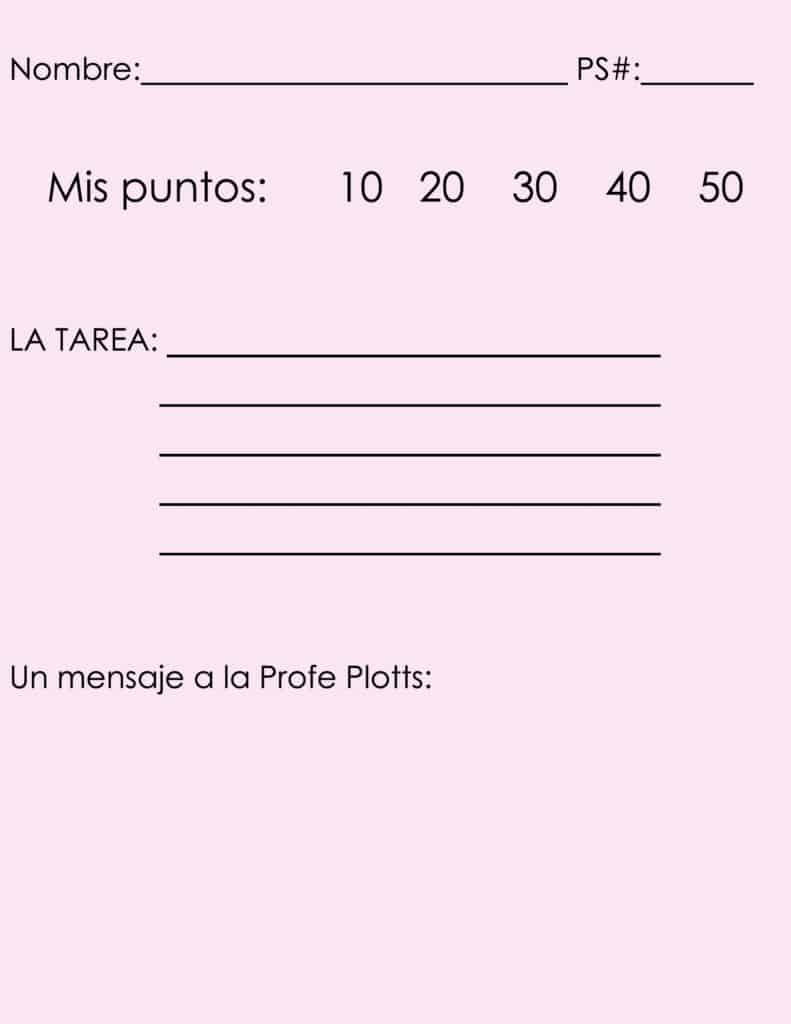
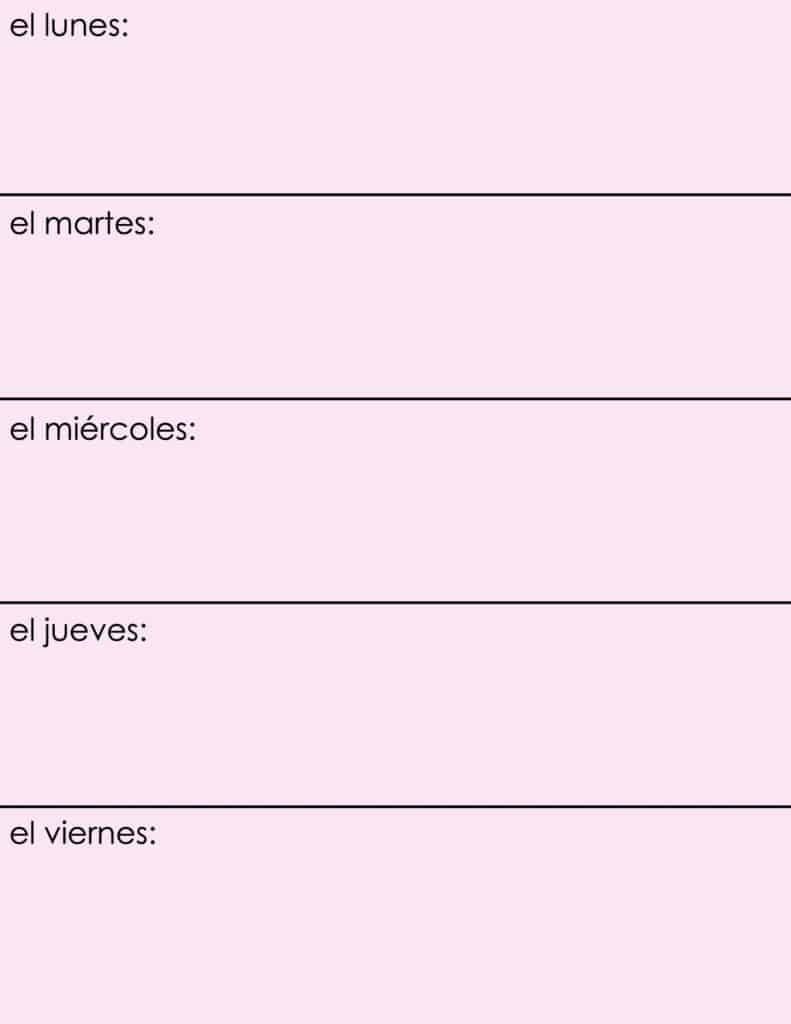

3. EL ORDEN DEL DÍA
Sanity-saving trick: Put up a daily agenda board. Save yourself from answering “What are we doing today?” five. million. times. a day. My students know to look there as soon as they walk in the room. There is space for a list of what each class is doing that day, any important announcements or reminders I might have for them, and the one every administrator looks for and LOVES to see displayed, the standard/learning objective of the day.
I use colored masking tape instead of drawing lines with a marker to make the lines last longer. Otherwise, they get easily erased and you find yourself drawing them three times a week and nobody has time for that.
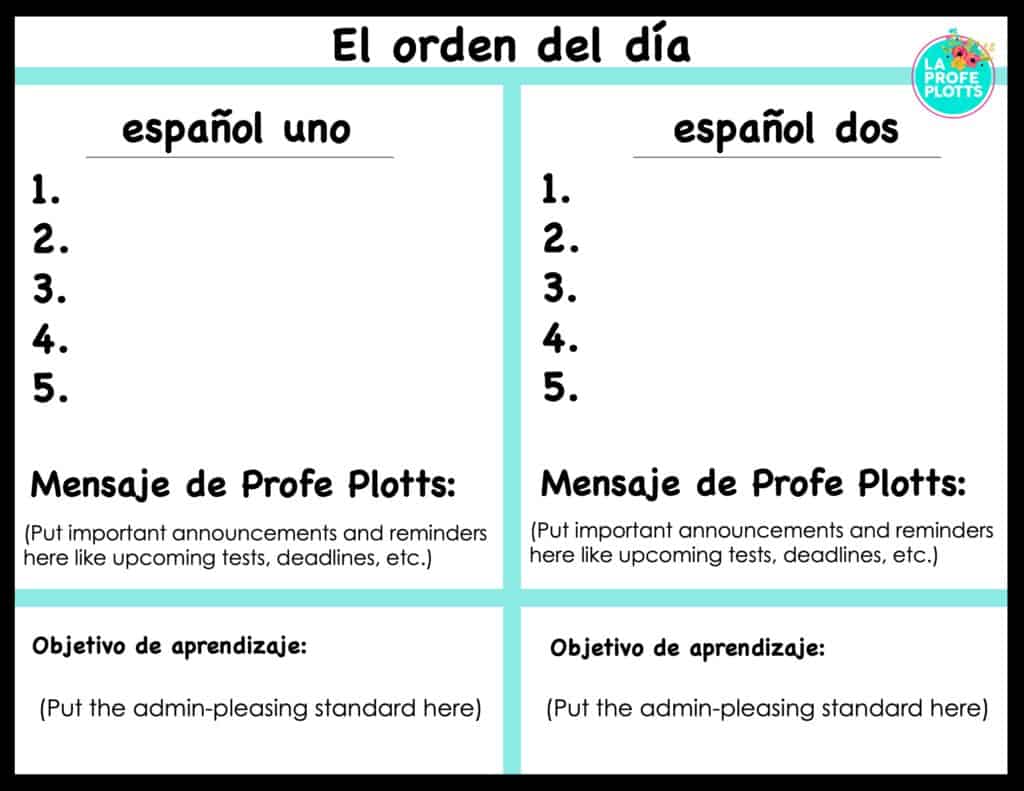
Want other ideas for your Spanish classroom? Check out this blog post with tons of cheap and easy decor ideas!

4. MEJOR AMIGO
Call me old school, but I still believe in students taking notes by hand. Research shows that students retain information better if it is written by hand rather than typed on a computer or tablet. I wanted a small, easily-recognizable place for students to keep their notes. Something they could carry around the room while doing task cards or other activities since they move at least 4x a day. From that, the idea of the mejor amigo was born.
WHAT IS A MEJOR AMIGO?
A mejor amigo is a small booklet that students make and write their notes in. We call them mejores amigos because they will be a student’s best friend over the next several weeks of Spanish class. I have always taught Spanish 1 and Spanish 2. I created units for each level and there are six units per level. Each unit is a mejor amigo. Spanish 1 does Mejores Amigos #1-#6 and Spanish 2 does Mejores Amigos #7-#12. My world is organized by mejores amigos.
MAKING A MEJOR AMIGO
At the beginning of each unit, students make a mejor amigo. To make one, each student will need:
- Two pieces of white computer paper
- Two pieces of yarn that I’ve pre-cut into pieces approx. 6″ in length
- Access to a 3-hole punch
- Colored pencils or crayons for decorating the front
I draw an example on the front whiteboard so students know what information needs to be included. Students need to put Mejor Amigo & number, give it a name (I mean, it is their best friend, after all), and write their name. They are encouraged to spend a little time personalizing it with colored pencils or crayons to help make it their own and make it easier to tell apart from the 30+ in the classroom on any given day. Another reason to have material boxes!
There is also a class copy of each mejor amigo. Each day that there are notes, a TA writes the notes in the class mejor amigo so students who are absent can catch their mejor amigo up when they return.
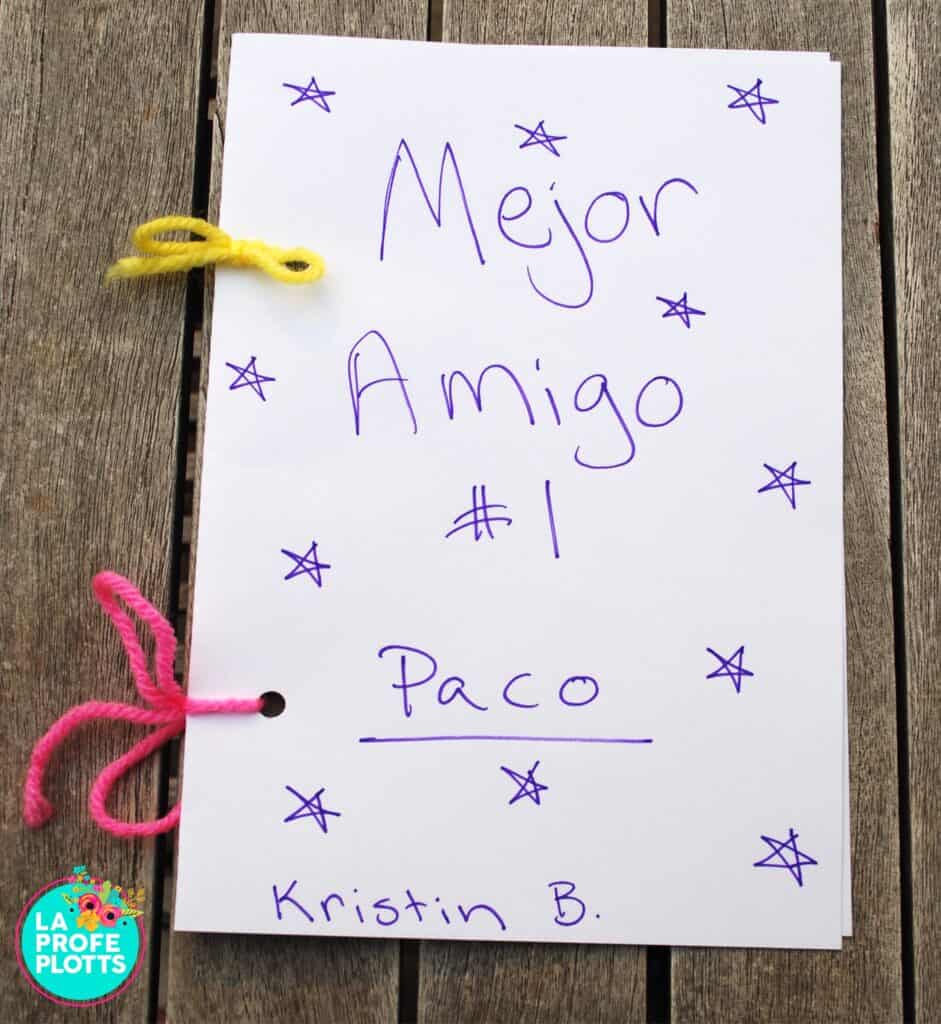

5. ABSENT BINDER
One of my least favorite questions I get as a teacher is when a student comes back after being absent and asks me “Did you guys do anything while I was gone?”. Nope, nada. We sat around and played on our phones (insert eye roll). One thing that has helped cut down on the time spent catching a student up is having an absent binder! It is kept in a designated space and students know the first thing they should do when they return from being gone is grab the binder.
Remember the pink sheets from above? I hate students missing out on the learning opportunity (and points) for a warm-up when they were gone so each day I print off the warm-up for each level and put them in the binder. Extra copies of hand-outs, permission slips, etc. go in there, too! Something to hand back to a kid? It goes in the binder. The class copy of the mejor amigo is in there, too! It is like Target: one-stop amazingness.

6. INDEX CARDS
You have probably heard of using popsicle sticks as a quick and easy way to call on students, as well as keep them on their toes and accountable. The problem with popsicle sticks is they just give you a name. I wanted more information from my students, information I could use to build relationships and help them be successful in my class. I came up with the idea of students making index cards during student teaching and have used it ever since.
At the beginning of the semester, every student makes an index card. Below is an example of what I write on the whiteboard. I hand each student an index card and ask them to fill out the information on the board.
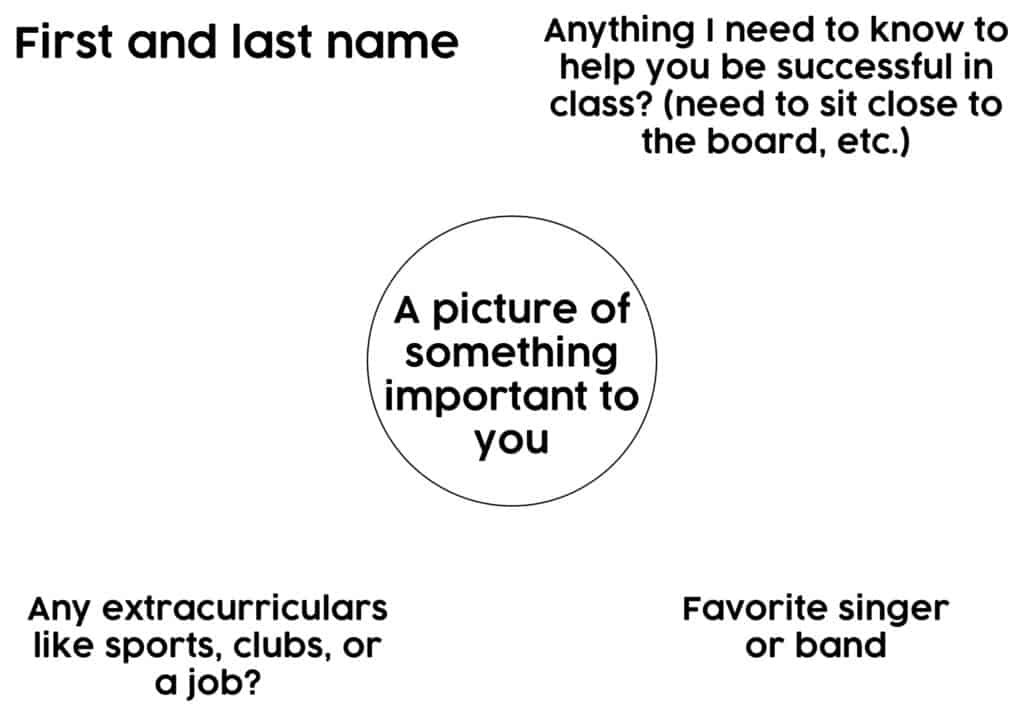
- Upper left, first and last name, is also a place for them to write any nicknames or the name they go by that might be different than what is on my class list.
- Upper right has been really helpful for setting the tone from Day 1 that I am here, I am listening, and I want them to be successful. I stress to students that I am the only one that sees the index cards so they are refreshingly honest with what they write. Some tell me about medical issues that affect where they need to sit in the room, others tell me about messy break-ups or fights between ex-friends, and others talk about how they learn best. All of that information is filed away in my brain for seating charts, pairing students for groups, and designing lesson plans.
- Bottom left gives me an idea of what kind of time commitments students have outside of class. I also like seeing what my students are involved in so I can make plans to attend some events and support them. Again, building relationships.
- Bottom right varies from favorite band to favorite TV show to hobbies. It’s just a fun way to learn more about them.
- The middle is probably my favorite. What students choose to draw is always fascinating to me. Some are goofy answers like cheese, but others are really thoughtful and tell me a lot about the student. My favorite ever was probably the big, tough-looking football player who drew a picture of his baby sister. I eagerly read all the cards at the end of the day and their answers always surprise me!
I use the index cards throughout the semester to randomly call on students for answers, put students randomly into groups by quickly pulling out cards, and spread them out on my desk to make groups for games like my Jeopardy-style trivia games when I want to control who is in what group. So much better than popsicle sticks! I also like to include their favorite bands, singers, activities, etc. in questions. Seeing their faces light up when they see their favorite singer’s name in the warm-up or their favorite band in a test question is so fun!
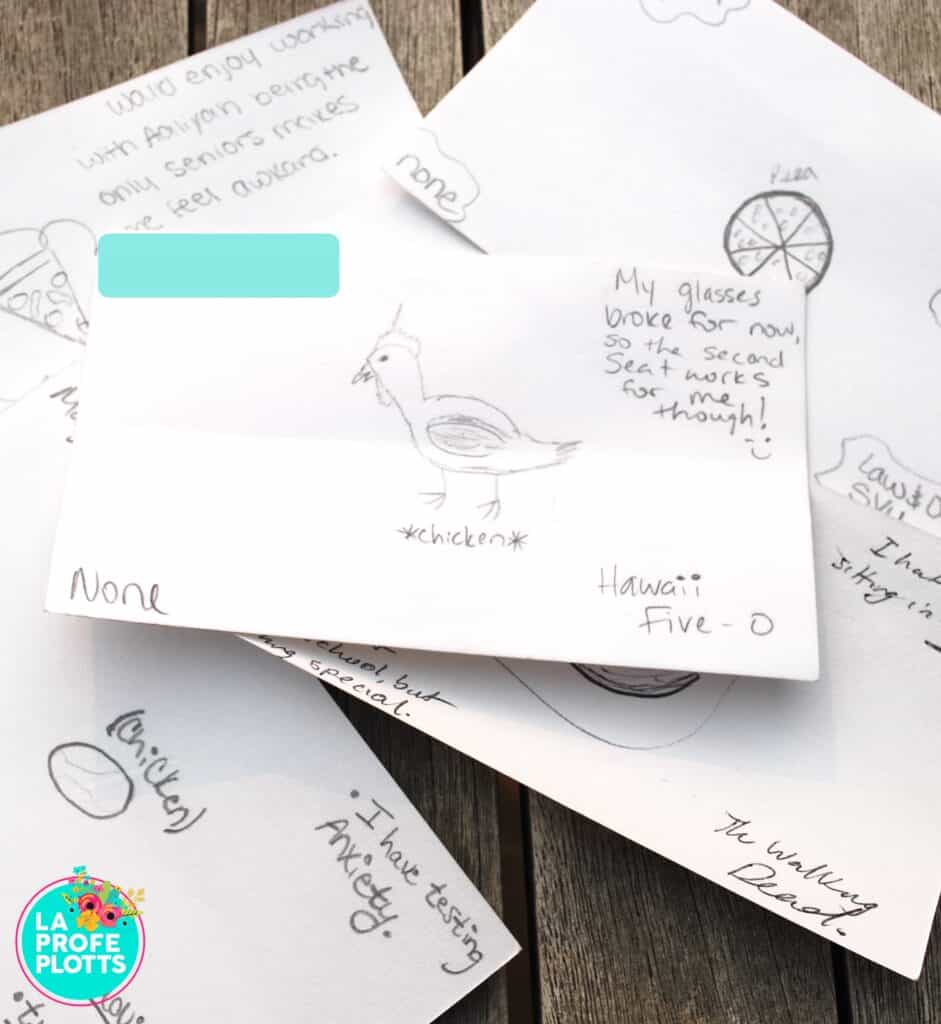

7. SPANISH CLASS STUDENT CENTER
Call me crazy, but I never get annoyed when students come to class without a pencil or paper. I am just happy they are there! To bypass students asking me to borrow something (and keep them from getting their germs all over the supplies on my desk! #onlysomanysickdays), I have a spot in my classroom that is a designated student center. I keep extra pencils, pens, and paper there. I also keep a couple of staplers, tape dispensers, 3-hole punches, and Spanish-English dictionaries. There is also a space for the supplies students need to make a mejor amigo like yarn and white paper.
If students leave things in my classroom, I have a shelf for those items, too. Students know they can get anything they need from there, no questions asked and no shaming. If they need to take the pencil with them to the rest of their classes that day, that is okay, too. I want them to be successful. If the difference between them being successful and being anxious and stressed out all day because they don’t have a writing utensil is a 5-cent pencil, I will gladly give them a pencil.
Need another idea for building relationships? Get to know your students with this FREE student questionnaire for the first week of school! Available in a Google Form or printable PDF.

If you end up using any of these ideas in your classroom, I would love to hear about it! Please tag me on IG (@laprofeplotts) or let me know on Facebook! These ideas have saved my sanity and I hope they help you, too! As always, if you loved this post, I would greatly appreciate you re-pinning it for me. Thanks and have a great day!


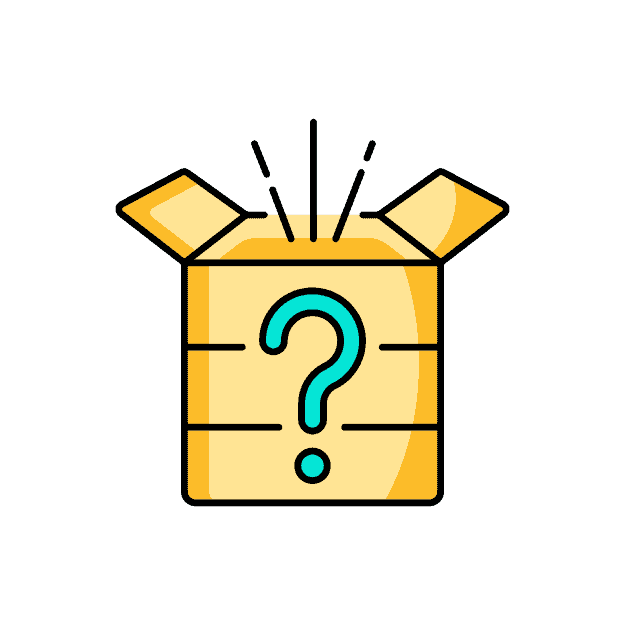


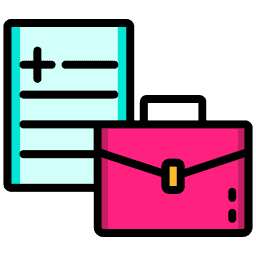
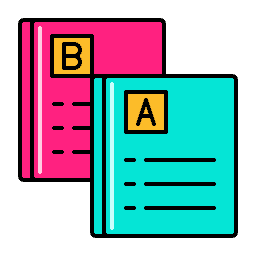

11 Responses
Hi, thank you for all the ideas! I still don’t understand what “La tarea” space is for? Do they write the activity number and page of a homework?
Can you elaborate on the “Mejor Amigo”. Does it have pages? What notes do you include? Do you store them in your classroom?
All these are wonderful ideas. I just have a question “tarea” on the pink sheet or bell ringer. Could you please explain the whole thing again? Also, I wonder if your students use chrome books or computers in your class. This year,we’re getting chrome books and I need some suggestions on how I can combine many of your ideas with the use of the computers.
Hi, Elsa! The tarea section is there for students to jot down any homework they might have for my class which is usually anything they didn’t finish in class. As for having Chromebooks, I have a TON of super fun digital resources that work on a Chromebook. Check out this blog post for a bunch of free digital resources.
Hola, After teaching in public school for 11 years I would say don’t start with computers. Pencil or paper is always better. Bell ringers is short under 2 minutes to get them to settle and refocus from their transition. Ask a question from the day before, remember 3 vocab words relating to your topic, correct a sentence or fix spelling really anything quick to get them to start thinking in Spanish
You have great ideas!! Thank you for sharing!!!!
Thank you! I am glad they are helpful! 🙂
Love these ideas. Could you explain more about the mejor amigo? Do you include the vocabulary or this is separate from the notes and handouts? Thank you!
The mejor amigo is where students hand-write any and all notes. They are not pre-printed with vocabulary or anything. Hope that helps!
Love the index cards! I often collect very similar information but not necessarily there. I have also used the four corners to track participation in any activity that I use the cards to call on students with (0 couldn’t answer, I answered just fine, – struggled to answer, + elaborated on an answer). Then at the end of the marking period I have one more piece of data to use to help determine how a student is doing (used for comments more than any points).
I love your ideas. Thank you for sharing them!